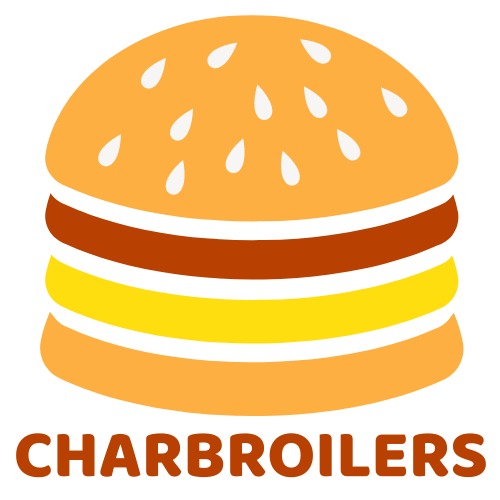
Your Guide to a Bun Steamer Commercial
Share
Picture this: you’re pulling perfectly fluffy, warm bao buns out for a customer, and they look identical to the last batch. And the one before that. That level of consistency isn't just good luck—it’s the direct result of having a dedicated bun steamer in your commercial kitchen. This single piece of equipment is one of the smartest investments you can make if you're serious about quality.
Why a Commercial Steamer Is Your Kitchen’s Secret Weapon
Don't think of a commercial bun steamer as just another machine. It's the key to unlocking serious operational efficiency and building a reputation for excellence. It finally lets you move past inconsistent, makeshift steaming methods and gives you precise, repeatable results that customers will absolutely notice.
This equipment is engineered to ensure every steamed product, from bao and dumplings to delicate rolls, comes out with the ideal texture and temperature. It’s built for the non-stop demands of a busy kitchen, offering a level of speed and reliability that a simple pot on a stove could never hope to match.
Boost Quality and Streamline Your Workflow
A dedicated steamer is designed to hold the perfect balance of heat and humidity. That’s the critical factor that keeps buns from turning soggy or drying out. This consistency has a direct line to your final product and, ultimately, the customer's experience. For your kitchen staff, it automates a key cooking process, freeing them up to focus on other important prep tasks.
This guide will walk you through everything you need to know to pick the right model:
- Exploring Different Types: From compact countertop units to high-volume floor models.
- Identifying Essential Features: What to look for in terms of durability and usability.
- Maximizing Your Investment: How a steamer improves your bottom line.
- Sizing and Capacity: Choosing the right fit for your business needs.
- Simple Maintenance: Tips to keep your equipment running flawlessly.
When you buy a commercial bun steamer, you're not just buying a piece of equipment. You're investing in product consistency, operational speed, and customer satisfaction. This guide is your resource for making a smart, informed purchase.
Of course, steamed goods are just one part of a great menu. A well-equipped kitchen needs versatile cooking power, which is why we also offer a wide selection of commercial charbroilers for your restaurant. Our inventory includes infrared, gas, and electric char broilers, each designed to deliver perfect results for your grilled menu items. This helps you build a complete equipment lineup that supports a diverse and appealing menu.
Understanding Different Commercial Bun Steamer Types
Picking the right bun steamer commercial unit can feel like a big decision, but it really just boils down to matching the right machine to your kitchen's needs. The options usually break down into two main camps based on size and where you’ll put them, each built for a different scale of operation.
For smaller spots like cafes, food trucks, or restaurants with a tight menu, countertop bun steamers are a fantastic choice. They're compact, don't guzzle energy, and have just enough steam power to keep up with a steady flow of customers without eating up precious floor space. Think of them as the handy utility players on your equipment team.
On the flip side, high-volume places like bustling dim sum restaurants, large cafeterias, or busy event caterers absolutely need a floor model bun steamer. These are the heavy-duty workhorses of the steamer world, built with massive capacity to handle a constant rush of orders. With one of these, you’ll never run out of perfectly steamed buns during your busiest hours.
Boiling Water vs. Advanced Steam Generation
Beyond just size, the real difference-maker is how the machine actually creates steam. The tech inside has a direct impact on how fast and consistent your food cooks. The more traditional models work a lot like a simple pot of boiling water—they create a gentle steam bath that’s perfect for delicate items that need a soft touch.
Then you have the more advanced steamers that use pressure or convection. This is like going from a gentle soak to a high-powered steam spa. These units generate steam way faster and circulate it more evenly, which is exactly what you need for high-volume cooking where speed is everything. This approach ensures every single bun, from the top rack to the bottom, comes out perfectly cooked.
The core decision isn't just about how many buns you can fit, but about the type of steam you're using. A gentle, boiling-water steamer is great for precision work, while a pressure or convection model is built for pure speed and output. That choice is critical for any high-traffic bun steamer commercial kitchen.
This whole market is blowing up, which says a lot about how our tastes are changing. The global market for bun steamers was valued at about $1.5 billion in 2023 and is on track to hit $2.4 billion by 2032. A huge part of that growth is driven by the rising popularity of ethnic foods, especially Chinese steamed buns making their way into Western countries. You can explore more about these market trends and what's behind them.
To get a better handle on the different steamers available, here's a quick rundown to help you compare the main types at a glance.
Commercial Bun Steamer Types at a Glance
| Steamer Type | Best For | Typical Capacity | Power Source |
|---|---|---|---|
| Countertop | Food trucks, cafes, small restaurants | 50-150 buns | Electric |
| Floor Model | High-volume restaurants, cafeterias | 200-500+ buns | Gas or Electric |
| Pressure Steamer | Fast-casual, high-speed kitchens | 100-300 buns | Electric |
| Convection Steamer | Large-scale production, catering | 300-600+ buns | Gas or Electric |
This table should give you a solid starting point for figuring out which category best fits your kitchen's size, volume, and power setup.
This image really drives home how much the marketing for steamed buns has evolved, shifting from old-school tactics to modern digital campaigns.
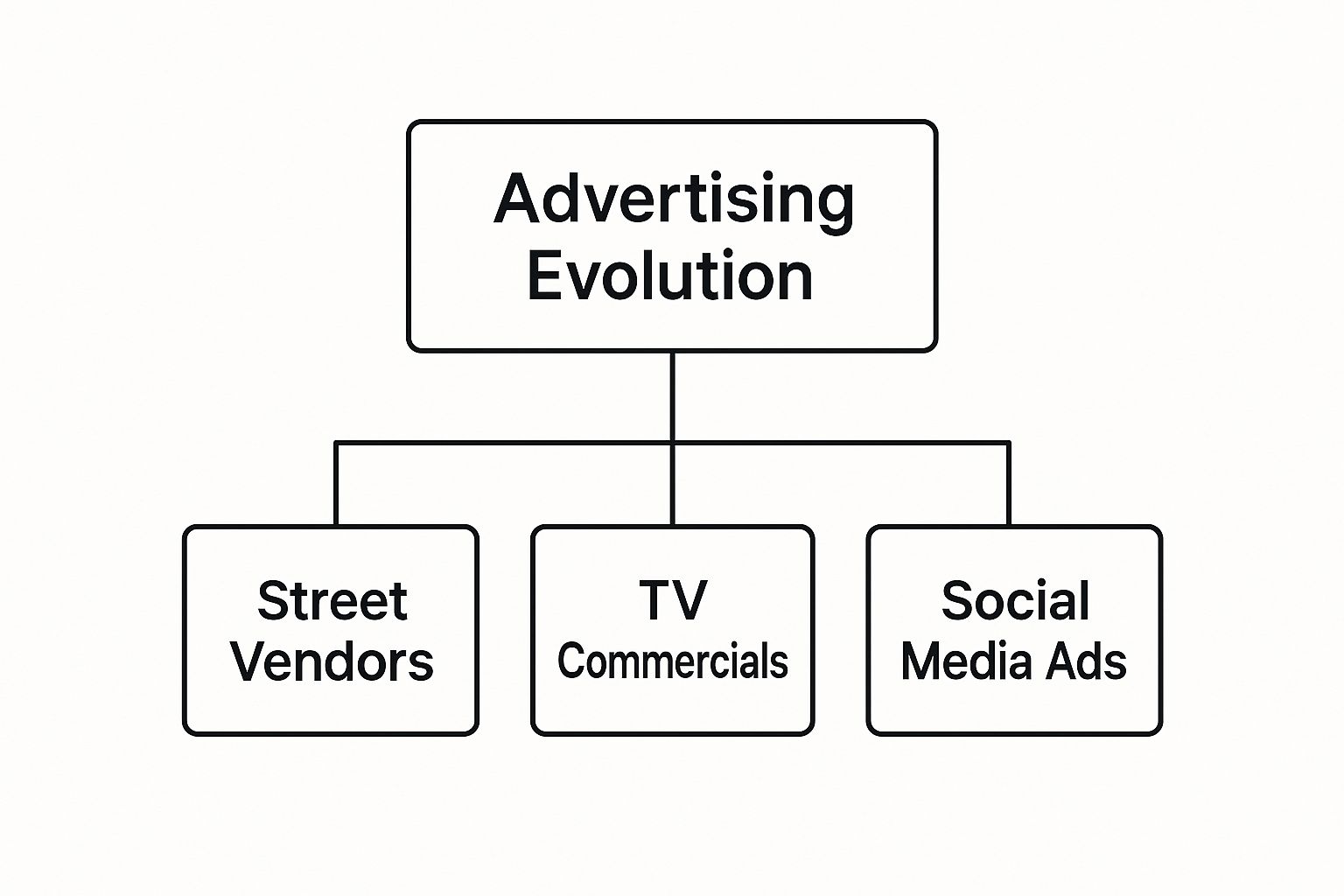
You can clearly see the journey from simple street vendor signs to big-budget TV and social media ads. It’s a perfect visual of how this humble food has gone completely mainstream.
What to Look For in a Bun Steamer
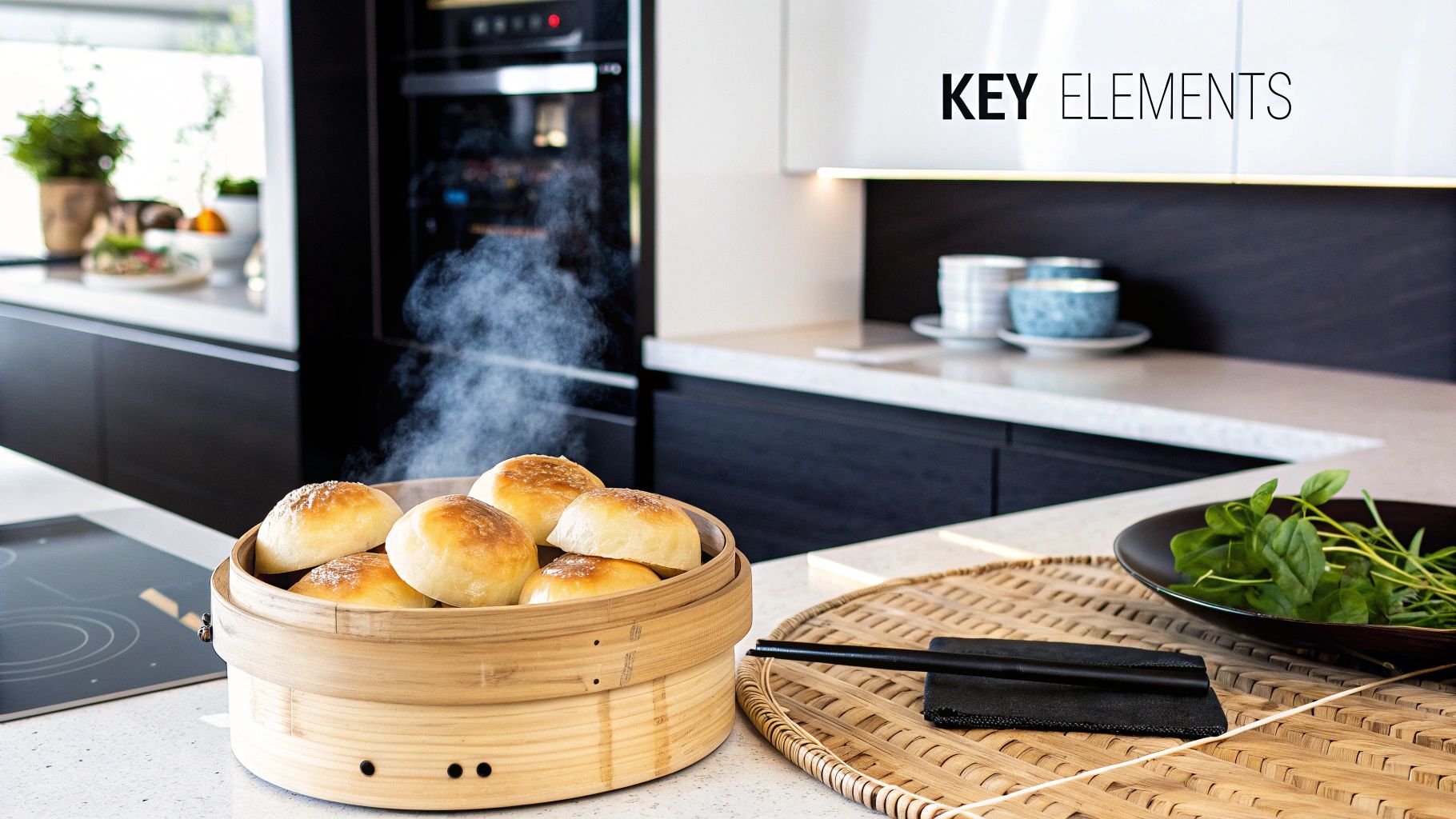
Once you’ve settled on the right type of bun steamer commercial unit for your kitchen, it's the specific features that really separate a workhorse from a headache. These details are what determine how long the machine will last, how easy it is for your staff to use, and ultimately, the quality of your food. Think of this as your must-have checklist before you buy.
The first thing I always look at is the construction. Don't even consider a unit that isn't built with durable stainless steel. It's the undisputed champion in commercial kitchens for a reason—it stands up to rust, dings, and the general chaos of a busy service, making sure your investment doesn't quit on you after a year.
Another game-changer for any busy kitchen is a direct water line hookup. Manually refilling a steamer's reservoir is a real pain and, more importantly, it's a huge risk. It's only a matter of time before someone gets distracted and the unit runs dry, burning out the heating element. A direct hookup takes that worry off the table, providing a constant water supply for non-stop operation.
Controls and Safety Features
Beyond the basic build, the controls are what give you real power over the final product. Getting that perfect, fluffy bun every single time comes down to precision, and that's where good controls make all the difference.
-
Adjustable Temperature Controls: This is absolutely essential. Without it, you’re just guessing. Different foods need different levels of steam, so being able to dial in the perfect temperature means you can go from delicate dumplings to hearty bao without ending up with a soggy or dried-out mess.
-
Low-Water Indicator: I consider this a non-negotiable safety feature. An alarm or a light that tells your staff the water is low can save you from a very expensive repair bill. It's a simple feature that prevents a fried heating element and reduces fire risk.
-
Timer with Audible Alarm: A built-in timer frees up your staff. They can drop a batch of buns, turn to another task, and trust the alarm to tell them exactly when it's time to pull them. No more over-steamed food or clock-watching.
These features aren’t just bells and whistles; they work together to make your kitchen safer and more efficient. They cut down on mistakes, reduce food waste, and protect your gear from damage that’s entirely preventable.
The best commercial bun steamer doesn’t just heat water; it gives you total command over the steaming environment. Features like precise temperature settings and automatic shut-offs are what empower your kitchen to produce perfect results every single time.
Smart Design for Cleaning and Upkeep
Finally, you have to think about the long game: cleaning and maintenance. A bun steamer commercial unit that’s a nightmare to clean will become a source of dread for your closing crew. I always look for models with removable racks, doors, and water pans. Smooth, seamless interiors without a bunch of nooks and crannies make the daily wipe-down quick and effective.
An easy-to-clean design isn't just about saving labor; it's about food safety. A clean machine is a hygienic machine. This practical detail is every bit as important as how well the steamer cooks.
And while you’re perfecting your steamed items, think about rounding out your menu. Check out our fantastic selection of commercial griddles to see how you can add even more crowd-pleasers to your lineup. A well-equipped kitchen is your best bet for keeping customers happy and coming back.
How the Right Steamer Improves Your Bottom Line
A quality bun steamer commercial unit isn't just another piece of equipment to buy; it's a smart investment that can have a direct, positive impact on your restaurant's profitability. When you move on from makeshift steaming setups to a dedicated machine, you'll see the difference where it counts: in your efficiency, your food costs, and your customers' happiness.
Think about how much time your team currently sinks into babysitting pots of boiling water or fiddling with clunky setups on the stovetop. A professional steamer handles that entire process automatically. This frees up your kitchen staff to focus on more valuable tasks—like artful plating, critical prep work, or managing other busy stations. That simple boost in workflow means faster ticket times and a kitchen that runs like a well-oiled machine, especially during the dinner rush.
Boosting Consistency and Slashing Waste
Inconsistent food is a quiet killer of profits. Every soggy, dried-out, or unevenly heated bun is product—and money—straight into the trash can. A dedicated bun steamer commercial unit changes the game by giving you precise control over temperature and humidity, ensuring every single item comes out perfect, every single time.
This rock-solid reliability does more than just cut down on food waste. It guarantees that the customer who fell in love with your bao buns last week gets the exact same amazing experience when they come back. That's the kind of consistency that builds trust and turns a one-time visitor into a loyal regular.
A great steamer delivers measurable returns by converting operational consistency into customer loyalty. When every bun is perfect, you minimize waste and maximize repeat business, which is the cornerstone of a profitable restaurant.
The Marketing Power of Steamed Food
There's a growing wave of customers actively seeking out healthier dining options, and that’s a trend you can ride. Steaming is well-known for preserving natural flavors, vitamins, and minerals, giving it a powerful reputation as a healthy cooking method. In fact, this trend is a major force in the commercial steamer market, which hit a value of around USD 1,243.8 million in 2023 and is projected to keep climbing. You can read the full research on this expanding market to see just how much health-conscious consumers are influencing equipment sales.
By featuring your use of professional steaming equipment, you can frame your menu items as a smarter, healthier choice. This gives you a compelling marketing angle that can really set you apart from competitors who rely mostly on frying or griddling. Of course, offering variety is key, so if you're looking to cater to every taste, you might also be interested in our selection of commercial electric deep fryers to round out your kitchen's capabilities.
Choosing the Right Size and Capacity for Your Business
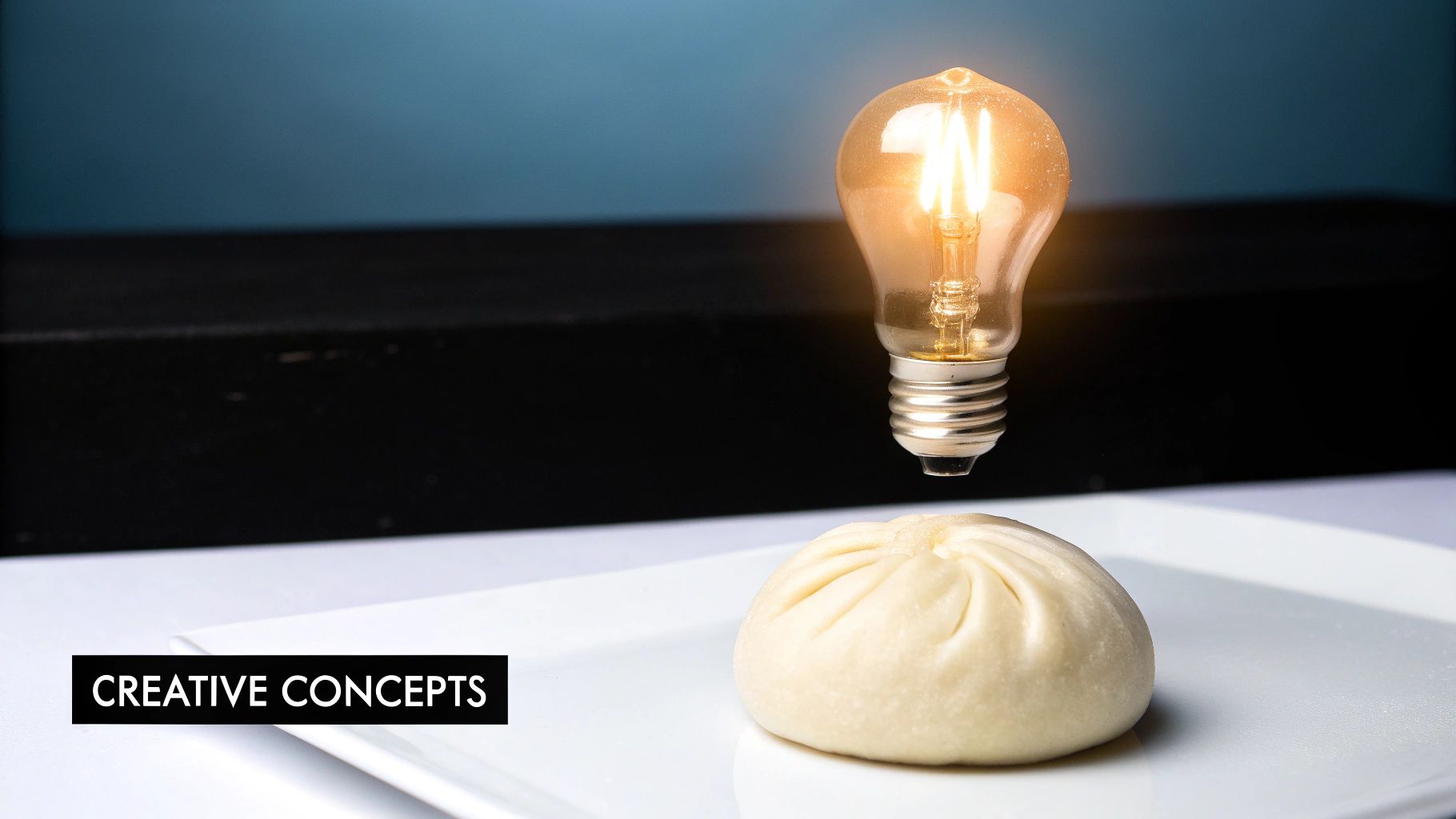
Buying the wrong size bun steamer commercial unit is a mistake you’ll feel every single shift. A steamer that’s too small creates a logjam right when you’re busiest, leaving customers waiting and your staff scrambling. Go too big, and you’re just wasting energy and precious kitchen real estate.
Getting this right isn't about guesswork; it’s about taking an honest look at your operation. The first step is to figure out your peak demand. How many steamed buns, bao, or other items do you really sell during your busiest hour? That number is your North Star—it will point you directly to the right piece of equipment.
Matching Steamer Size to Your Operation
Let’s talk real-world scenarios. A cozy café that added bao buns to the menu as a popular special can get by just fine with a compact countertop model. These units are workhorses for lower-volume needs, giving you consistent results without hogging space.
But if you're a high-traffic dim sum spot or a food stall in a bustling market, you need a multi-level floor unit. These are the powerhouses built to churn out hundreds of buns an hour, ensuring you never fall behind. This is especially true in certain markets; the Asia Pacific region, for instance, dominated the specialized steamer market with a 23% share valued at USD 44.99 million in 2024. That stat alone shows you how vital high-capacity equipment is where demand is fierce.
The goal is to buy the steamer you need for your busiest day, not your slowest. Undershooting on capacity is a recipe for operational chaos and lost sales when you can least afford it.
Planning for Growth and Logistics
A smart purchase isn’t just about today—it’s about where your business is headed. If you’re planning to expand your menu or you see sales trending upward, think ahead. Buying a steamer with 15-20% more capacity than you currently need is a savvy move that keeps you from outgrowing your investment in a year.
Before you get too excited and click "buy," you have to nail down the logistics.
- Physical Footprint: Break out the tape measure. Will a countertop unit fit where you need it, or do you have to carve out floor space? Always leave extra room for proper ventilation and safe operation.
- Electrical Load: Check the steamer's specs. Does your kitchen have the right outlets and enough juice on the circuit to handle it? The last thing you want is to blow a fuse mid-service.
- Plumbing Requirements: Does the model you're eyeing need a direct water line or a drainage hookup? Confirming you have the necessary plumbing nearby will save you from a massive installation headache.
Thinking through these details ensures the bun steamer commercial model you choose actually works in your kitchen. And while you’re upgrading your steaming game, don’t forget about other cooking methods. To get that perfect sear on meats and veggies, check out our selection of commercial hot plates—they’re the perfect partner to any steaming setup.
Simple Maintenance to Keep Your Steamer Running Flawlessly
Even the most bulletproof bun steamer commercial unit needs a little TLC to perform at its best. Consistent upkeep is the only way to protect your investment, guarantee food safety, and dodge those nightmare breakdowns that always seem to happen during the dinner rush.
Think of it as a quick pre-flight check for an airplane. A few simple, routine tasks can prevent major turbulence down the road. A well-maintained steamer doesn't just last longer; it runs smarter, using less energy and heating up faster. Ignore it, and you’re looking at slower cook times, inconsistent results, and higher utility bills.
Your Essential Cleaning Checklist
The best way to keep your steamer happy is with a simple cleaning schedule. When you break the work down into daily, weekly, and monthly tasks, it stops feeling like a chore and just becomes part of the kitchen's rhythm.
Daily Tasks (End of Day):
- Wipe Down All Surfaces: Grab a soft cloth and a mild, food-safe detergent to clean the inside and outside of the steamer.
- Empty and Rinse the Water Tank: Always drain the leftover water. This prevents stale, off-tasting steam from ruining tomorrow's buns.
- Clean Door Gaskets: Wipe down the rubber seals around the door. This keeps them free of gunk and ensures a tight seal for efficient steaming.
Weekly Tasks:
- Deep Clean Racks and Shelves: Pull out all the racks and give them a good soak in a cleaning solution to dissolve any baked-on grime.
- Inspect Steam Jets: Take a peek at the little steam nozzles inside. Make sure they aren't clogged with food bits or mineral deposits.
The silent killer of any steamer’s heating efficiency is mineral buildup, also known as scale. Over time, these deposits from hard water act like insulation on the heating element, forcing it to work harder and eventually fail.
Descaling and Troubleshooting
If your business is in an area with hard water, monthly descaling is non-negotiable. Grab a commercial-grade descaling solution and follow the manufacturer's instructions to the letter. This one task can dissolve that performance-killing mineral buildup, restoring your heating element's power and dramatically extending the life of your bun steamer commercial unit.
Running into issues? If you're getting uneven heating, clogged steam jets are the usual suspect. A quick scrub with a small brush is often all it takes. For a minor water leak, check the door gasket for any cracks or wear—it's usually a cheap and easy part to replace yourself. Handling these simple fixes in-house keeps your kitchen humming and your money in your pocket.
Complete Your Kitchen With the Perfect Commercial Charbroiler
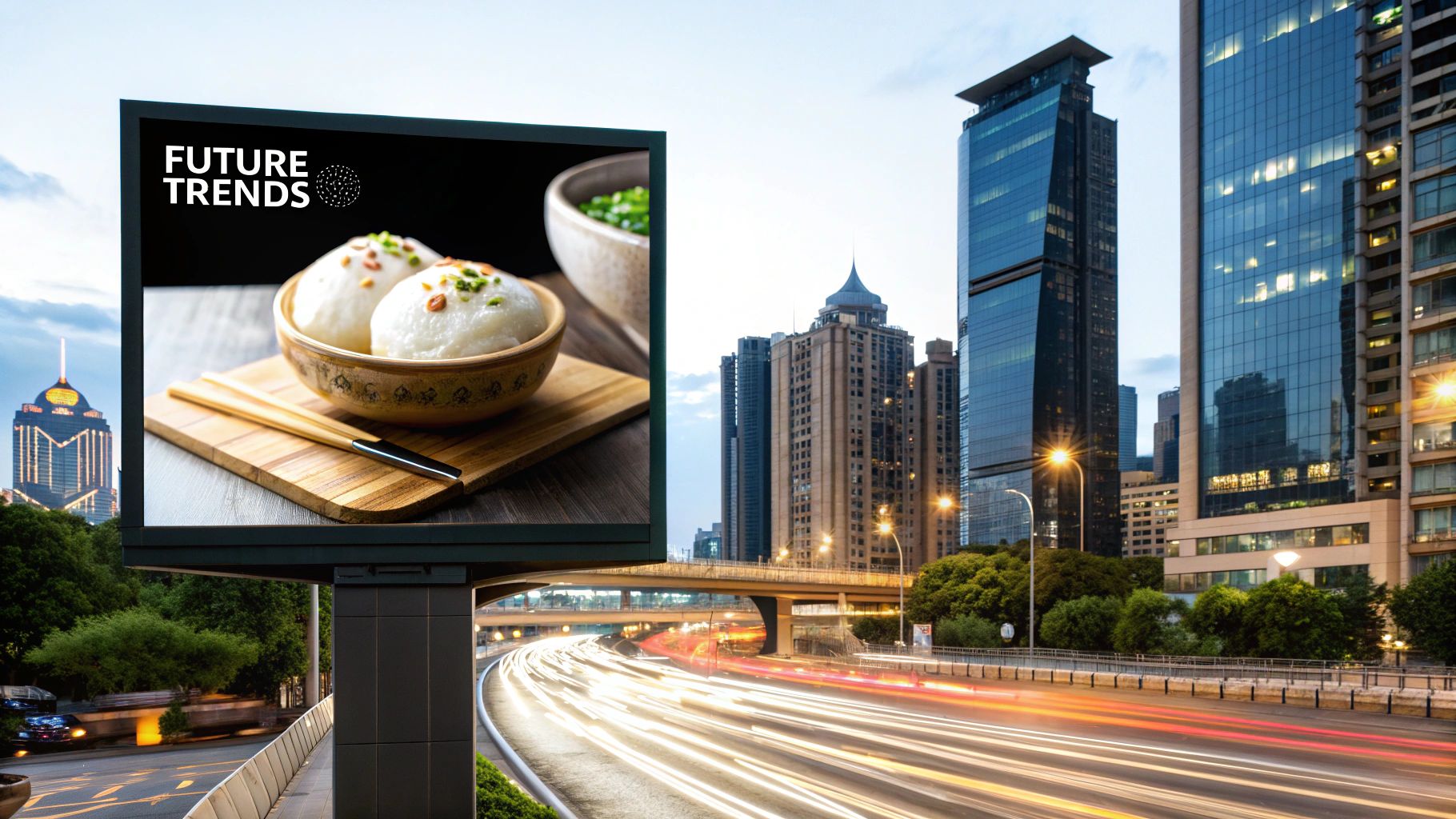
Those perfectly fluffy, moist buns from your bun steamer commercial unit are fantastic, but they’re only half the story. The real magic happens when you load them up with fillings that have that irresistible smoky flavor and those beautiful, deep grill marks. To build a full, exciting menu that keeps people lining up, you need more than one trick up your sleeve.
That's where a high-performance commercial charbroiler comes in. It's the essential partner to your steamer.
Think of them as a tag team. The steamer gets the bun absolutely perfect, while the charbroiler delivers that authentic, flame-grilled taste for your proteins and veggies. It rounds out your kitchen's capabilities, letting you move beyond just steamed items and into the highly profitable world of grilled entrees, sandwiches, and sides.
Finding Your Ideal Charbroiler
We offer a wide selection of commercial charbroilers for your restaurant, and each one is built to tackle different kitchen challenges and fuel types. Knowing the difference helps you pick the right tool for the job.
-
Infrared Charbroilers: These are all about power and precision. They use intense, radiant heat to cook food fast and evenly, locking in juices while cutting way down on messy flare-ups. They're a lifesaver for busy kitchens that demand consistency.
-
Gas Charbroilers: The classic go-to for countless chefs. Gas gives you incredible temperature control, letting you make instant adjustments on the fly. You can go from a blistering sear on a steak to a gentle char on delicate vegetables with just the turn of a knob.
-
Electric Charbroilers: If you don't have a gas line, these are your answer. Electric charbroilers are efficient units that provide reliable, even heat. They’re a fantastic, versatile choice for food trucks, concession stands, or any kitchen needing serious grilling power without the hassle of a gas hookup.
A charbroiler isn’t just another piece of equipment; it’s a strategic investment that unlocks entirely new menu possibilities. When you complement your steamed buns with flame-grilled perfection, you create a more complete and satisfying experience for every single customer.
Ready to build out your kitchen's full potential? Take a look at our complete collection of high-performance cooking equipment and find the perfect tools to take your menu to the next level.
